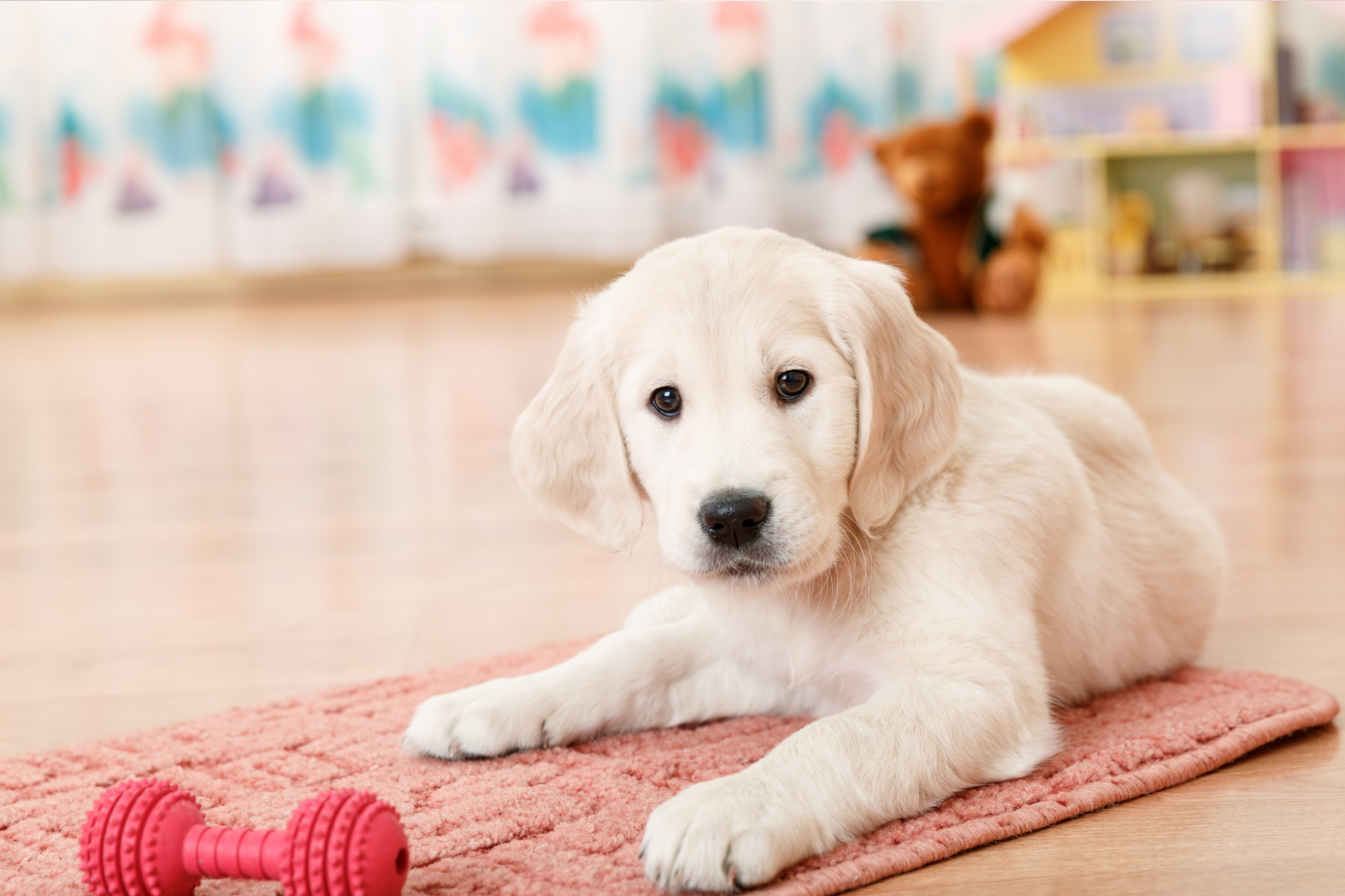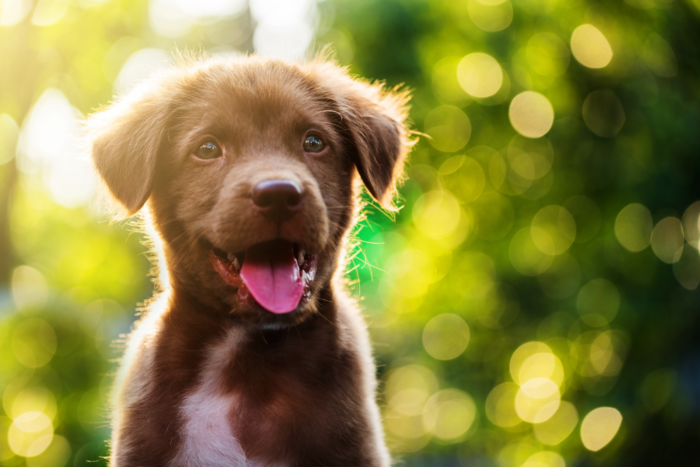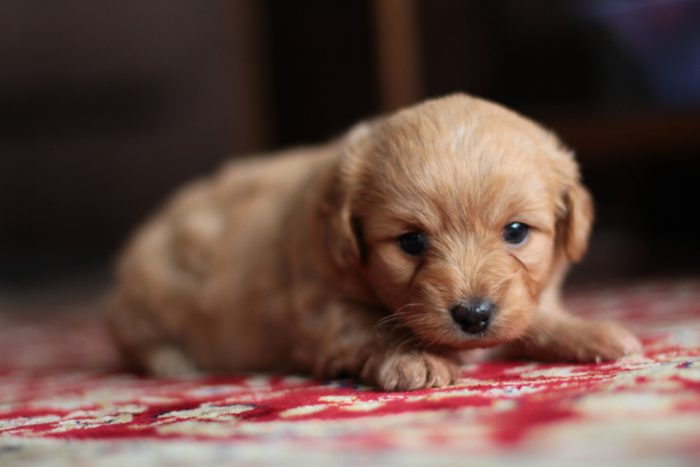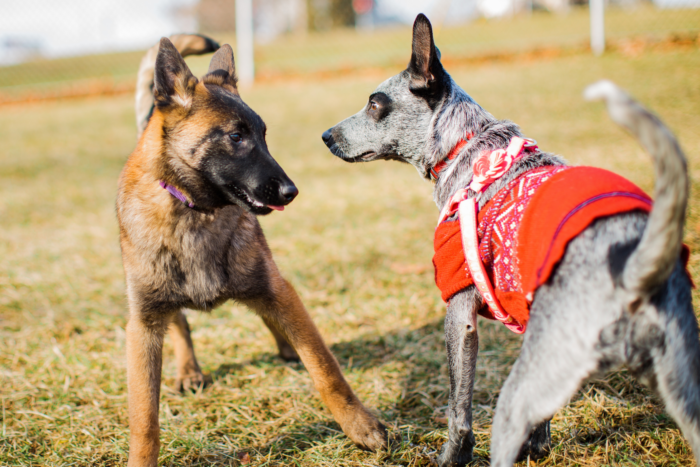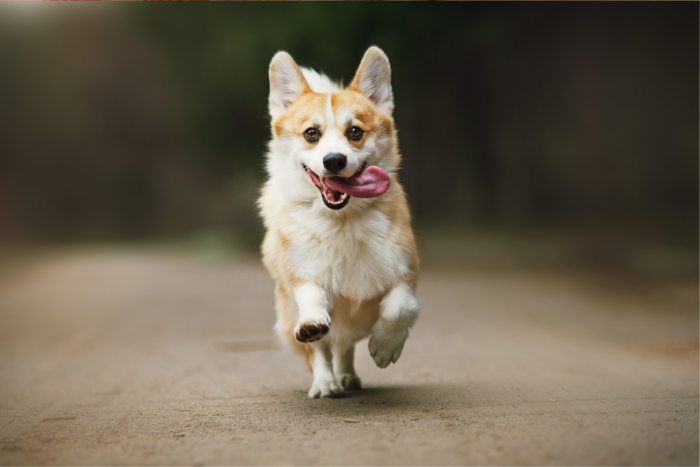Puppy problems! Raising a puppy – what can you expect?
Getting a puppy is often a time of great excitement and expectations of days filled with cute, joy. It is difficult to resist those puppy eyes and endearing head tilts. However, the reality of living with a puppy can sometimes be quite different. Often those sharing their home and lives with a new dog can experience puppy problems that they were not prepared for and suddenly feel disappointed that their expectations of the situation are not met. Suddenly you can be faced with an out of control, snapping creature that has sharp needle like teeth that is jumping up and hanging off of you!
Puppy problems are extremely common, as becoming an adult is a complex process in any species, involving both physical and mental growth and development. Behaviour is influenced and modified throughout a dog’s life, through learning from interactions with environments and experiences (Lindsay, 2000). Factors such as health, epigenetics, social experience, learning history and physical growth, all influence an individual’s development. It is likely you will experience to some degree the following issues whilst sharing your life with a puppy:
- Jumping up.
- Behaviours classed as aggressive.
- Toileting in the home.
- Resource Guarding.
It is advisable to research before looking to bring a puppy home. Preparation is key to success. If you have decided rehoming a young dog is not desirable for your circumstances, it is vital to ensure you purchase a pup from a reputable breeder who has thoroughly health tested the parents and carries out any recommended assessments on the puppies when advised. A good breeder should also evaluate the behavioural suitability of the sire and dam, also if your situation would be a suitable one for their puppies. Lindsay (2000) discusses that from 3 to 15 weeks of age, the average dog would have learnt more during that timeframe than it will over the rest of its life. Early experiences form lasting cognitive and emotional schemata, which influence how an individual will experience situations as an adult and its predisposition to future learning. Therefore, to successfully assess and resolve issues you may encounter with your puppy during its development, it is essential to understand the stages of development that your dog will go through.
Neonatal Period (Birth to 12 days)
Just before birth sexual dimorphism occurs forming the foundation for male or female like behaviours. At birth puppy’s brains are barely myelinated, providing them limited sensory and behavioural capacities of sensitivity to pressure, pain, movement and taste. In neonatal pups it appears strong stimulation elicits withdrawal, and low intensity stimulation evokes approach behaviours. These behaviours allow the neonates to seek warmth and food from mother. Puppies are unable to regulate their body temperature and exhibit distress vocalisation if separated from littermates or mother and become cold.
Therefore, such early experience could have formed part of a learning history in your puppy that motivates vocalisation in situations where they feel uncomfortable. They also will move away if too warm, to maintain optimum temperature. Due to restricted mobility skills, being deaf and blind puppies are dependent on their mother for food, warmth and to stimulate elimination. Resulting in them spending most of their time nursing and sleeping.
Bradshaw (2011) discusses experiments which suggest olfactory imprinting at this stage in puppies, as it is believed neonatal pups also have sensitivity to smell. Dunbar (2006) states that “neonatal pups are extremely sensitive and impressionable” resulting in the possibility of experiences influencing an individual’s future both positively and negatively. For example, forced early weaning (before day 15) causes a predisposition to oral and motor compulsions involving kneading and sucking of soft objects in adults. Knowing this can help canine carers to understand why some individuals develop a predisposition to chew and suck soft objects.
This motivation towards orally interacting with objects can then result in those objects becoming damaged and a possibility of resource guarding behaviours developing. Breeders can help rear puppies who are likely to be more confident and less reactive by starting from this early stage, with daily exposure to mild environmental stressors like fluctuations in ambient temperature and gentle handling for as little as 3 minutes. This is proven to have a positive influence on a puppy’s physical and mental development. Lindsay (2000) explains that dogs who have such experiences demonstrate resistance to disease, enhanced development of motor and problem-solving skills, display confidence, are less reactive emotionally.
Transitional Period (12 to 21 days)
During the transitional stage remarkable change and development in both the neurological and physical development of the pup is taking place. Eyes and ear canals open, puppy’s legs start to support the body, allowing development of crawling and then uncoordinated walking. Locomotion is linked to the eyes opening and can start as early as day 12 (Lindsay, 2000). Miklὀsi (2011) highlights the large variation in timing of both ear and eye opening between different dog breeds and the varying duration of the transitional period among breed types, for example it lasts a few days in Fox terriers but longer than a week in to show Cocker Spaniels.
These variations give insight into how different breed types develop at different rates both physically and mentally. Learnt avoidance is developing, as Cornwall and Fuller (1961) discovered 15-day old pups can learn a conditioned avoidance response, which progressively improved to 90% by day 19. Through such a conditioned response these puppies are more likely to choose avoidance behaviours in life. During this stage puppies may start to eliminate independently of the mother’s stimulation and as Lindsay (2000) explains they develop a desire for contact independent of that from nursing, to provide a comfort.
Therefore, maternal interactions will start to teach the puppies about how to navigate social interactions with adult dogs. Serpell (1995) illustrates play between littermates begins during this phase. Alongside the development of social communication, such as identifying others through scent, tail wagging and pups learning to use vocal communication to alert to distress. Lack of opportunities to experience this will greatly impact upon a dogs social behavioural repertoire. Through repeated experience to positive or negative aspects of the environment, pups at this stage are slowly acquiring the capacity to adapt their behaviour. Teeth begin to emerge late in this period (at around day 19 to 21) and puppies develop the capability to eat semisolid food.
Socialisation (3 to 12 weeks)
The close of the transitional period brings a fast upsurge in the volume of environmental and social stimulation they process. Arguably the development over this 3 to 12 week period is the most influential of a dog’s life. This period forms the foundation for many adult behaviour patterns and potential problems (Fox, 1968). Lindsay (2000) states “virtually every functional behaviour system is strongly impacted by the kind of treatment a puppy receives during this period”. Coppinger (2004) discusses the “critical period for social development” to be between 2 & 16 weeks, at the end of which the dog’s social personality is set for life. Breed type and individual variation impacts on the closing of the socialisation windows and experiences during these periods affect brain development causing some permanent change. Suggesting, if a pup is not exposed to those whom he will need to interact with as an adult during this stage, he may well avoid or escape interactions with them for the rest of his life. Dehasee (2001) explains that at 5 weeks investigation-attraction behaviour decreases and fear of the unknown increases.
Coppinger (2001) debates until this first fear impact at 5 – 12 weeks puppies, do not express “fear” to novel situations to enable habituation to their environment. But after the onset of this stage they can display avoidance behaviours such as flight in response to startling or stressful experiences. The onset of escape/avoidance behaviours are a natural mechanism to protect the survival of the species. If the fear motor neurone pattern is reinforced at this stage it can cause a permanent change in the dog’s brain (Coppinger, 2001). Making an individual predisposed to exhibit fear responses to situations within which they are uncomfortable. This means social interactions should be carefully managed and safeguarded to be as positive an experience as possible.
Primary Socialisation (21 days to 5 weeks)
A greater social awareness and response is taking place with the dawn of increased brain development and coordination. Play with littermates and inanimate objects incorporates motor neurone predatory sequences – stalking, chasing, pouncing & shaking. Body language communication skills develop through Coppinger (2004) describes this period as when the pup learns which species it belongs to and is predisposed and has optimum capacity to learn particular social skills.
This highlights the importance for socialisation with other breeds during this stage, to development a dog’s communication skills within its own species. Breed types have natural (and sometimes un-natural e.g. docked tails) physical differences which will impact the ability to communicate through body language, so pups need to learn how to modify their communication to compensate.
This stage of development is reliant on a good breeder assisting your pups social development and interactions with littermates, Mother and any other canines in the environment. You can impact upon this positively by enquiring what the breeder does to support this period and understand where you may need to put more work in to help your puppy develop its canine social skills once it lives with you. As teeth develop, Mothers start to wean the puppies through using canine communication in the form of avoidance, vocalisation and body language to stop painful suckling.
This feedback functions in the puppy learning how to control the pressure of its jaw, along with the mouthing and biting of littermates which occurs frequently during this stage. Helping to teach our puppies how to modify the power of their jaw and inhibit their bite, if this experience is a negative one or not experienced it will lead to an induvial who is likely to cause unintentional damage with their bite.
Secondary Socialisation (4 – 12 weeks)
Various evidence demonstrates that dogs are able to cross-species socialise, enabling them to adjust to and thrive with human companionship (Coppinger, 2001). The period tends to coincide with weaning and most efficient socialisation appears to be experienced at around 7 weeks. Then from 7 weeks of age the potential of social fearfulness gradually increases, however this does not mean that dogs after this age are unable to benefit from socialisation.
Scott & Fuller (1965) concluded that by eight weeks and no later than 12 weeks is the optimum time to remove a puppy from the litter and introduced to circumstances they are likely to encounter as adults. Puppies should be weaned and ready to go to their new homes between 7 to 8 weeks of age, at this time they experience rapid growth and require optimum nutrition to support their development. This stage is arguably the most important one that a puppy owner can influence to help shape the desired development of their puppy, as its one within which their puppy will come to live with them! During this stage it is vital to ensure your puppy is exposed to situations in a positive and pleasurable manner to build a learning history of experiences that can continue through the dogs life.
Juvenile Period (12 weeks – 6 months)
The puppy is now developing adult teeth and starting to physically mature. Generally, this period starts at the end of the secondary socialisation stage, when an individual is approximately 2/3rds of what will be its size as an adult. During this developmental stage puppies begin to grow in confidence within familiar environments and test social relationships. Lindsay (2000) explains social competitiveness overlaps with the socialisation period and by 12 weeks of age a fairly stable social hierarchy develops in a litter. Serpell (1995) discusses that socialisation needs to continue with juvenile dogs, as young dogs may experience a second fear impact hormonal driven stage at around 4-6 months, which can be seen in adverse reactions to novel things or of things it was unafraid of before.
During this stage a sudden increase in exploratory behaviours displayed by a young dog gaining independence and confidence will occur at any time. Fisher (2004) explains this flight Instinct stage does not usually cover the whole of this period, usually just a few days to a month. The flight period will have a huge impact on your dogs ability to focus on you when outside and make it less likely to return to you. During this stage you are strongly advised to start teaching your puppy the communication of reward based positive reinforcement training, so you can build its behaviour repertoire and associate cues with these desired behaviours. Also, you will then have skills and tools to help support your puppy through its development.
Adolescence (5 – 14 months)
Adolescence is always a stressful and testing period for both a puppy and its humans. This is due to the hormonal changes and fluctuations that we cannot see, plus the behavioural development our pups will be experiencing. This phase is when the dog’s physical growth has started to slow, and it is becoming sexually mature (this is independent of behaviour maturity). A bitch reaches sexual maturity with the onset of its first season generally after 6 months of age. Some females may not go into heat any time before 18 months old, as the factors required to switch on the required hormonal changes in the ovaries has not occurred until then.
Case (2005) explains male dogs usually reach sexual maturity at around 10 months old. Hormonal changes (increase in testosterone in males and oestrogen in females) are occurring, which can cause behavioural changes such as a startle response to familiar objects. Donaldson (1996) explains lack of social experience in adolescences tends to cause social communication errors (i.e. enthusiastic puppy greeting, from an adolescence who scent is communicating it is sexually mature). These communication errors can be corrected by positive interactions with well-socialised, behaviourally mature adult dogs and positive reinforcement training around humans.
Maturity and Adulthood (9 months plus)
Lindsay (2000) defines maturity by an individual fully displaying adult like behaviours such as displaying less random energetic outbursts, using scent marking to communicate their presence in an area to other dogs and appropriate social interactions. The time when this stage takes place is influenced by factors such as breed size and sex. Smaller dogs tend to mature sooner, and larger breeds take much longer to behaviourally mature (Fuller & Fox, 1969). Beaver (2009) explains social maturity is reached in pups usually between 12 to 24 months but may be as late as 36 months in giant breeds. Some like Dunbar (2006), argue that domestic breeds never mature. Adulthood is defined by the individual having stopped growing, the replacement of all puppy teeth with adult ones and becoming sexually mature. By 9 months of age most dogs have achieved 90% of their adult size.
Puppy growth plates closure tends to be completed between 4 and 18 months, depending on the anatomic site and breed (von Pfeil & DeCamp, 2009). Tiny dogs may reach their optimum physical size at 4 months old, whereas extra-large breed types can keep physically growing until 18 months old. It is believed that the smaller the dog the faster they mature. Beaver (2009) states “Sexual maturation can actually take place over a wide age range – from 1.5 to 24 months. The most common age for puberty is 6 to 9 months”. In all dog’s, biological changes occur which affect them physically, mentally and behaviourally. Adult dogs will exhibit behaviours that they have had reinforced during their development and environmental factors such as diet will also influence the physical development of an individual.
Conclusion
It is vital to ensure you have ensured the health of your dog is as is should be. In order to help prevent puppy problems from developing, it is essential that breeders play an active role in rearing healthy puppies who have suitable positive experiences from birth. Optimum nutrition and health, coupled with experiences and environmental exposure, during the stages of canine development, will all have some impact on when a dog matures and becomes an adult both physically and behaviourally (Miklὀsi, 2011).
Early experience, such as the timing of when they are removed from their mother and litter, will profoundly shape a pup’s development. As a canine carer the responsibility lies with us to ensure a young dog is exposed to situations in the best way for it as an individual, using positive experiences to mould their learning. Often neutering a puppy at approximately around 6 months of age is advised, to help prevent un-wanted or un-suitable breeding (Lane & Cooper,1999). This however does not always carefully consider the individuals sexual, hormonal, physical and behavioural status. It is important to weigh up all the factors on an individual basis when deliberating neutering. As, early neutering can prevent an individual from reaching true sexual maturity, which may in turn impact upon physical, hormonal and behavioural development (Becker et al, 1992). The usual prerequisites for an individual to become an adult are completed physical development, sexual maturity and the expression of adult behaviours.
Case (2005) states it is generally accepted that puppies are no longer a puppy and are an adult at about 12 months of age. However, due to the huge variation in species physical size and behavioural maturation influenced by selective breeding, we need to ensure the individual is considered before using generalisations (Coppinger, 2002). All these factors lend to the question; does a domestic pet dog ever stop being a puppy? Are you organising to get a puppy? Then the Puppy Problems webinar is an essential tool to help you prepare to prevent or resolve any potential issues you may experience with your new arrival. If you already have a puppy and are experiencing issue with your pup and don’t know what to do, or would like guidance on how to understand your puppy’s problems better, and how to resolve them then the Puppy Problems webinar is valuable viewing. Click here to sign up: https://tromplo.com/webinar/possessed-puppy-manual-problem-solver/
References
Bailey, M and Bailey, R (2001) The ABC’s of Behaviour. Dog Trainers Resource The APDT Chronicle of the Dog Collection. Beaver, B. (2006) Canine Behaviour. Insights and Answers. 2nd Edition. Missouri: Saunders Elsevier. Becker J, Breedlove M and Crews, D (1992) Behavioral Endocrinology. Birch, M and Bailey J. (1999) How Dogs Learn. Hoboken: Wiley Publishing, Inc. Case, L (2005) The Dog Its Behaviour, Nutrition & Health. Oxford: Blackwell Publishing Ltd. Coppinger, R and Coppinger L. (2004) Dogs, A New Understanding of Canine Origin, Behaviour and Evolution. Romford; Crosskeys Select Books Dawkins, M (1999) Unravelling Animal Behaviour. 2nd ed. Harlow: Pearson Educational Ltd. Dehasse, J (2001) ‘Sensory, Emotional and Social Development of the young Dog. ‘Veterinary Clinical Ethology. Vol 2. pp. 6-29 Ver1.1 [online] Available at: <www.jeoldehasse.com> [Accessed 2 December 2011] Fogle, B. (1990) The Dog’s Mind. London: Penguin Group Ltd. Fox, M. (1978) The Dog, Its Domestication and Behaviour. New York: Garland STPM Press. cited in: Serpell, J. (1995) The Domestic Dog its evolution, behaviour and interactions with people. Cambridge: The Press Syndicate of The University of Cambridge. Fuller, J and Fox, M (1969) The Behaviour of dogs. In Hafezb ESE (ed): The Behaviour of Domestic Animals, 2nd ed. Baltimore: Williams and Wilkins Lane, R and Cooper, B. eds. (1999) BSAVA Veterinary Nursing. 2nd ed. Oxford: Reed Educational and Professional Publishing Ltd. P188. Lindsay, S. (2000) Handbook of Applied Dog Behaviour and Training. Vol 1. Iowa: Blackwell Publishing Company. Lorenz, K. (1954) Man Meets Dog. London: Methuen. cited in: Serpell, J. (1995) The Domestic Dog its evolution, behaviour and interactions with people. Cambridge: The Press Syndicate of The University of Cambridge. Miklὀsi, A. (2011) Dog Behaviour, Evolution and Cognition. Oxford: Oxford University Press. Scott, J. Fuller, J. (1965) Genetics and the Social Behaviour of the Dog. Chicago: University Chicago Press. cited in: Serpell, J. (1995) The Domestic Dog its evolution, behaviour and interactions with people. Cambridge: The Press Syndicate of The University of Cambridge. Turner, T. (1998) Veterinary Notes for Dog Owners. London: Popular Dogs Publishing Co Ltd. Von Pfeil, D and DeCamp, C. (2009) The Epiphyseal Plate: Physiology, Anatomy, and Trauma. Compendium: Continuing Education for Veterinarians. CompendiumVet.com http://www.bestbehaviour.org/about
See also other posts:
June 30, 2023
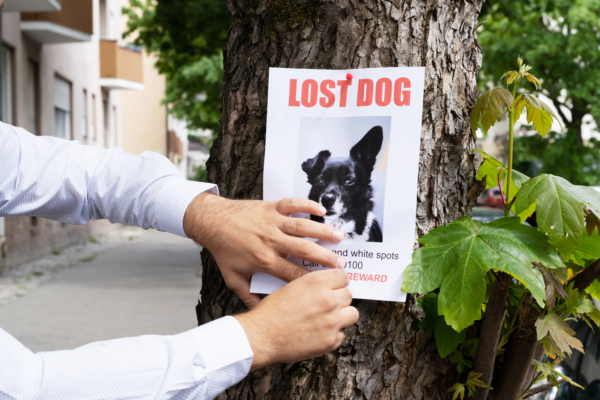
Get Your Lost Dog Back Home Quickly: Follow These 12 Tips for Success
Vacations favor more frequent and longer walks with our furry friends. We travel, visit new places. Summer makes us loosen our brakes and allow our…
June 30, 2023
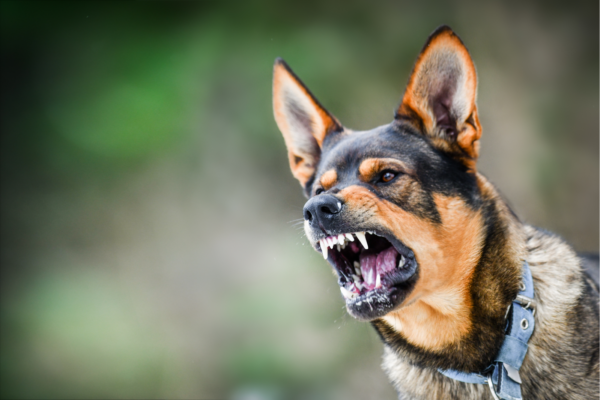
Managing Aggressive Dog Behavior: Tips for Peaceful Living
Living with an aggressive dog may seem challenging, but it can be peaceful and manageable with the right approach. One key aspect is to remain…
June 30, 2023
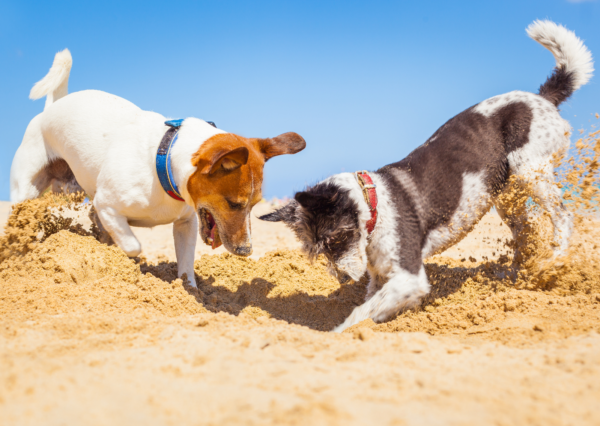
Unlocking the Secret to Successful Puppy Socialization: Quality over Quantity
Today, although the topic is very important, I will keep it brief. Socialization is a topic that could fill books or scientific papers. However, today…

